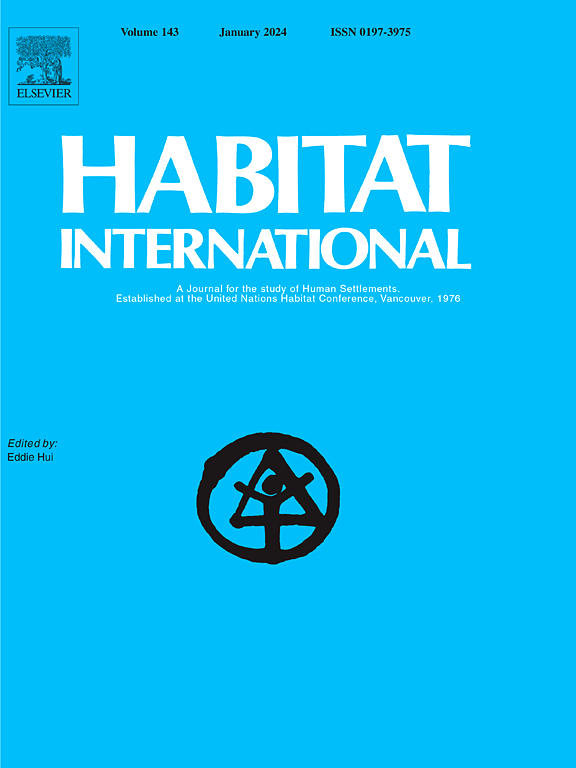AI, machine learning and BIM for enhanced property valuation: Integration of cost and market approaches through a hybrid model
IF 7
1区 经济学
Q1 DEVELOPMENT STUDIES
引用次数: 0
Abstract
Accurate property valuation is essential for real estate market stability, housing affordability and financial decision-making. However, traditional valuation methods face key limitations. The market approach, reliant on comparable sales data, is prone to subjectivity and data availability constraints. The income approach relies on stable rental income streams, which are often unavailable for newly built dwellings in volatile rental markets. And, the cost approach, based on the Depreciated Replacement Cost (DRC) method, neglects broader market influences by focusing solely on property characteristics. Despite advancements in Automated Valuation Models (AVMs) using Machine Learning (ML), these models remain sensitive to market fluctuations and lack integration with 3D property characteristics. To address these challenges, this study proposes a hybrid Artificial intelligence (AI) and Building Information Modeling (BIM)-driven property valuation model, integrating the DRC method with market-based valuation adjustments using ML, Natural Language Processing (NLP) and BIM 3D models. The framework consists of several key stages, including mass land valuation using ML techniques, automated construction cost estimation through BIM-based Quantity Take-Off (QTO) and NLP-based cost-matching, dynamic depreciation assessment via BIM-integrated maintenance management, entitlement calculation using optimization techniques, and market impact assessment through ML-driven modeling. The methodology was tested on a high-rise residential building in Melbourne, Australia, and the results demonstrated high accuracy, with estimated property values closely aligning with recent market transactions. The estimated values for one-bedroom and two-bedroom units were 100 % within the range of recent market transactions, and the estimate for the three-bedroom units showed only a 0.057 % deviation from the actual market value. The study advances the digital transformation of property valuation, showcasing how AI, ML and BIM enhance automation, accuracy and efficiency. These findings hold significant implications for the real estate sector, offering a scalable and adaptable framework for industry adoption.
人工智能、机器学习和BIM用于增强房地产估值:通过混合模型整合成本和市场方法
准确的房产估值对于房地产市场的稳定、住房负担能力和财务决策至关重要。然而,传统的估值方法面临着关键的局限性。市场方法依赖于可比销售数据,容易受到主观性和数据可用性的限制。收入方法依赖于稳定的租金收入流,而在动荡的租赁市场上,新建住宅往往无法获得稳定的租金收入。而且,基于折旧重置成本(DRC)法的成本法只关注物业特征,忽略了更广泛的市场影响。尽管使用机器学习(ML)的自动估值模型(avm)取得了进步,但这些模型仍然对市场波动敏感,并且缺乏与3D属性特征的集成。为了应对这些挑战,本研究提出了一种混合人工智能(AI)和建筑信息模型(BIM)驱动的物业估值模型,将DRC方法与基于市场的估值调整结合起来,使用ML、自然语言处理(NLP)和BIM 3D模型。该框架由几个关键阶段组成,包括使用机器学习技术的大规模土地估价,通过基于bim的数量起飞(QTO)和基于nlp的成本匹配进行自动化建筑成本估算,通过bim集成维护管理进行动态折旧评估,使用优化技术进行权利计算,以及通过机器学习驱动建模进行市场影响评估。该方法在澳大利亚墨尔本的一座高层住宅建筑上进行了测试,结果显示出很高的准确性,估计的房产价值与最近的市场交易密切相关。一居室和两居室单位的估价完全在近期市场成交的范围内,而三居室单位的估价与实际市价的偏差仅为0.057%。该研究推进了房地产估值的数字化转型,展示了人工智能、机器学习和BIM如何提高自动化、准确性和效率。这些发现对房地产行业具有重要意义,为行业采用提供了可扩展和可适应的框架。
本文章由计算机程序翻译,如有差异,请以英文原文为准。
求助全文
约1分钟内获得全文
求助全文
来源期刊

Habitat International
Multiple-
CiteScore
10.50
自引率
10.30%
发文量
151
审稿时长
38 days
期刊介绍:
Habitat International is dedicated to the study of urban and rural human settlements: their planning, design, production and management. Its main focus is on urbanisation in its broadest sense in the developing world. However, increasingly the interrelationships and linkages between cities and towns in the developing and developed worlds are becoming apparent and solutions to the problems that result are urgently required. The economic, social, technological and political systems of the world are intertwined and changes in one region almost always affect other regions.
 求助内容:
求助内容: 应助结果提醒方式:
应助结果提醒方式:


